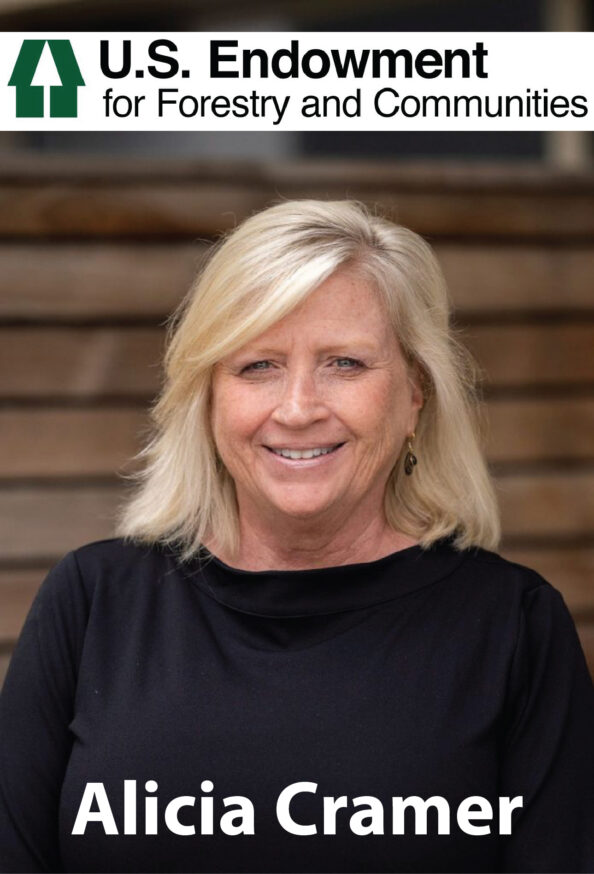 Planting a tree can seem like an easy win for the planet. It’s a popular pledge for corporations and organizations eager to participate in sustainability programs and promote environmental responsibility. But here’s the catch: not all trees have the same impact, and not all tree-planting efforts contribute to forest sustainability. As we approach International Day of Forests, it’s worth asking: Are we missing the forests for the trees? Many sustainability programs focus on planting but often overlook the critical role of future forest management — particularly the need for processes like forest thinning. Thinning removes competitive trees which allows the healthiest trees to grow larger and more valuable, and be better equipped to withstand droughts, wildfires, diseases and insect infestations.
Planting a tree can seem like an easy win for the planet. It’s a popular pledge for corporations and organizations eager to participate in sustainability programs and promote environmental responsibility. But here’s the catch: not all trees have the same impact, and not all tree-planting efforts contribute to forest sustainability. As we approach International Day of Forests, it’s worth asking: Are we missing the forests for the trees? Many sustainability programs focus on planting but often overlook the critical role of future forest management — particularly the need for processes like forest thinning. Thinning removes competitive trees which allows the healthiest trees to grow larger and more valuable, and be better equipped to withstand droughts, wildfires, diseases and insect infestations.
…By 2030, the World Economic Forum has made a goal to conserve, restore and grow one trillion trees around the world. This is a noble cause, but we must ask ourselves how many of these trees will provide the desired effects of carbon sequestration, water management, soil erosion prevention, biodiversity and possible forest products? …We must continue to grow the understanding that harvesting trees is not inherently harmful; it is responsible harvesting that ensures forest health. Less than 2% of working forest land is harvested each year, which provides a steady supply of timber – used in building houses and furniture – while maintaining an ecological balance for the future.
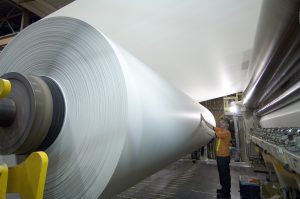 Following the US government’s imposed tariffs on steel and aluminium, Cepi has called on the European Commission to continue negotiations, citing the potential for future tariffs including pulp and paper and aiming to avoid supply chain disruptions. Cepi is currently taking part in a consultation launched by the European Commission. …The confederation asks the Commission to exclude from such EU retaliation list products that risk being in short supply in the EU. …According to Cepi, the EU imports around 900,000 tonnes of pulp per year from the US and close to 600,000 tonnes of paper and board, while the EU exports about 1600,000 tonnes of paper and board to the US and around 350,000 tonnes of pulp. It states that since a multilateral agreement of all major pulp and paper producers in January 2004, there have been no import tariffs on both sides of the Atlantic.
Following the US government’s imposed tariffs on steel and aluminium, Cepi has called on the European Commission to continue negotiations, citing the potential for future tariffs including pulp and paper and aiming to avoid supply chain disruptions. Cepi is currently taking part in a consultation launched by the European Commission. …The confederation asks the Commission to exclude from such EU retaliation list products that risk being in short supply in the EU. …According to Cepi, the EU imports around 900,000 tonnes of pulp per year from the US and close to 600,000 tonnes of paper and board, while the EU exports about 1600,000 tonnes of paper and board to the US and around 350,000 tonnes of pulp. It states that since a multilateral agreement of all major pulp and paper producers in January 2004, there have been no import tariffs on both sides of the Atlantic. US President Donald Trump’s tariff threat could motivate more Canadian lumber producers to shift to the US southern border while accelerating efforts to find new markets, industry experts said. The levies are the latest in a nearly four-decade dispute between the neighbors over softwood lumber, used in construction, furniture and paper production. Levies on Canadian lumber could hit 40% if current duties of 14.54%, and Trump’s proposed 25% tariffs are added. …”Disparity in log costs and availability are the major drivers here, but Canadian investment in the region has certainly been partially motivated to moving operations where they avoid the impact of duties,” said Dustin Jalbert at FastMarkets. …”In 2004, there were only two sawmills owned by a Canadian manufacturer. Today, we have more than 50,” said Kyle Little, at Sherwood Lumber.” Canadian companies now produce more than a third of the volume of the largest producing region in the US – the US South.”
US President Donald Trump’s tariff threat could motivate more Canadian lumber producers to shift to the US southern border while accelerating efforts to find new markets, industry experts said. The levies are the latest in a nearly four-decade dispute between the neighbors over softwood lumber, used in construction, furniture and paper production. Levies on Canadian lumber could hit 40% if current duties of 14.54%, and Trump’s proposed 25% tariffs are added. …”Disparity in log costs and availability are the major drivers here, but Canadian investment in the region has certainly been partially motivated to moving operations where they avoid the impact of duties,” said Dustin Jalbert at FastMarkets. …”In 2004, there were only two sawmills owned by a Canadian manufacturer. Today, we have more than 50,” said Kyle Little, at Sherwood Lumber.” Canadian companies now produce more than a third of the volume of the largest producing region in the US – the US South.” CNN’s Vanessa Yurkevich explains how much US home prices could increase due to President Donald Trump’s tariffs. [Video report only, 2 .5 minutes]
CNN’s Vanessa Yurkevich explains how much US home prices could increase due to President Donald Trump’s tariffs. [Video report only, 2 .5 minutes] Shopping for a new home? Ready to renovate your kitchen or install a new deck? You’ll be paying more to do so. The Trump administration’s tariffs on imported goods from Canada, Mexico and China are already driving up the cost of building materials used in new residential construction and home remodeling projects. The tariffs are projected to raise the costs that go into building a single-family home in the U.S. by $7,500 to $10,000… Such costs are typically passed along to the homebuyer in the form of higher prices, which could hurt demand at a time when the U.S. housing market remains in a slump and many builders are having to offer buyers costly incentives to drum up sales… “These prices will never come down,” Schnipper said. “Whatever is going to happen, these things will be sticky and hopefully we’re good enough as a small business, that we can absorb some of that.”
Shopping for a new home? Ready to renovate your kitchen or install a new deck? You’ll be paying more to do so. The Trump administration’s tariffs on imported goods from Canada, Mexico and China are already driving up the cost of building materials used in new residential construction and home remodeling projects. The tariffs are projected to raise the costs that go into building a single-family home in the U.S. by $7,500 to $10,000… Such costs are typically passed along to the homebuyer in the form of higher prices, which could hurt demand at a time when the U.S. housing market remains in a slump and many builders are having to offer buyers costly incentives to drum up sales… “These prices will never come down,” Schnipper said. “Whatever is going to happen, these things will be sticky and hopefully we’re good enough as a small business, that we can absorb some of that.”
 President Donald Trump’s March 1 Executive Order calling for “
President Donald Trump’s March 1 Executive Order calling for “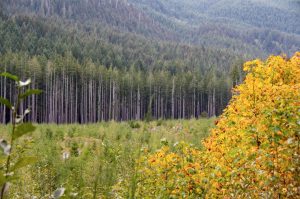 The US president recently suggested that domestic lumber production could be significantly increased by opening federal lands to logging. This move, he argued, would reduce US dependence on lumber imports from Canada and Europe. …At first glance, tapping into federal timber resources might seem like a logical solution. However, the reality is far more complicated. A combination of declining forestry expertise, legal challenges, labor shortages, infrastructure limitations, and lack of private investment incentives makes this an unrealistic path to reduce lumber imports to the US. …While the US president suggests that opening federal lands for logging could boost domestic lumber production, this is an unrealistic expectation. …Despite claims that the US no longer needs Canadian lumber, the reality is that imports from Canada and Europe will continue to play a crucial role in meeting US domestic wood demand in the future.
The US president recently suggested that domestic lumber production could be significantly increased by opening federal lands to logging. This move, he argued, would reduce US dependence on lumber imports from Canada and Europe. …At first glance, tapping into federal timber resources might seem like a logical solution. However, the reality is far more complicated. A combination of declining forestry expertise, legal challenges, labor shortages, infrastructure limitations, and lack of private investment incentives makes this an unrealistic path to reduce lumber imports to the US. …While the US president suggests that opening federal lands for logging could boost domestic lumber production, this is an unrealistic expectation. …Despite claims that the US no longer needs Canadian lumber, the reality is that imports from Canada and Europe will continue to play a crucial role in meeting US domestic wood demand in the future.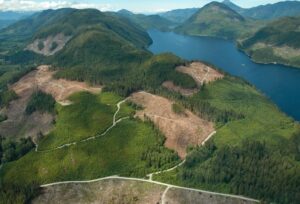 WASHINGTON STATE is one of the most productive parts of the country for growing timber. Most of the timber is west of the Cascades and its annual production in the United States is only second to Oregon. However, harvesting faces significant constraints according to the Department of Natural Resources (DNR). DNR manages about two million acres of timberlands, but only half can be harvested due to challenging terrain or environmental protections, such as endangered species habitats. …Federal lands in Washington state currently produce minimal timber, and changing protected land status would require congressional action, not just presidential directives. Upthegrove, a Democrat, anticipates any attempts to increase federal timber harvesting would face lengthy legal challenges. In Washington state, over 70% of the timber harvested comes from privately owned forestland. …For these reasons, state officials believe Washington cannot realistically offset the costs associated with Canadian lumber tariffs.
WASHINGTON STATE is one of the most productive parts of the country for growing timber. Most of the timber is west of the Cascades and its annual production in the United States is only second to Oregon. However, harvesting faces significant constraints according to the Department of Natural Resources (DNR). DNR manages about two million acres of timberlands, but only half can be harvested due to challenging terrain or environmental protections, such as endangered species habitats. …Federal lands in Washington state currently produce minimal timber, and changing protected land status would require congressional action, not just presidential directives. Upthegrove, a Democrat, anticipates any attempts to increase federal timber harvesting would face lengthy legal challenges. In Washington state, over 70% of the timber harvested comes from privately owned forestland. …For these reasons, state officials believe Washington cannot realistically offset the costs associated with Canadian lumber tariffs.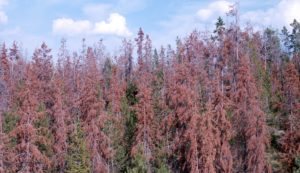 It might be time to treat your trees to prevent pine beetle infestations in the Black Hills. That’s according to US Forest Service Entomologist Kurt Allen, and Department of Agriculture and Natural Resources Forest Health Specialist John Ball. The pair have been hosting talks and information sessions on mountain pine beetle outbreaks since 1999. Last week, they stopped in Spearfish with a handful of clear messages. For one thing, the Black Hills is not necessarily on the verge of a mountain pine beetle epidemic — at least not on the scale last seen a decade ago… “Between the larvae feeding and a blue stain fungus they introduce, they kill trees very quickly,” Ball said.
It might be time to treat your trees to prevent pine beetle infestations in the Black Hills. That’s according to US Forest Service Entomologist Kurt Allen, and Department of Agriculture and Natural Resources Forest Health Specialist John Ball. The pair have been hosting talks and information sessions on mountain pine beetle outbreaks since 1999. Last week, they stopped in Spearfish with a handful of clear messages. For one thing, the Black Hills is not necessarily on the verge of a mountain pine beetle epidemic — at least not on the scale last seen a decade ago… “Between the larvae feeding and a blue stain fungus they introduce, they kill trees very quickly,” Ball said.

 KANSAS CITY, Mo. — An extreme fire danger continues to affect all counties across Kansas this week, and Missouri is also under a high fire danger this week. In Missouri, there were more than 40 wildfires burning across the state as of Monday morning. In Kansas, there were four — one burning across 1,500 acres east of Winfield and another spanning 1,200 acres west of Dover. “This week brings continued high fire danger across the state,” the Forest Service said. “Unfortunately, this is just the beginning of fire season.” In preparation for the fire danger this week, the Forest Service said it’s coordinated with the Great Plains Interstate Fire Compact to bring in reinforcements from out of state — including Wyoming and Utah.
KANSAS CITY, Mo. — An extreme fire danger continues to affect all counties across Kansas this week, and Missouri is also under a high fire danger this week. In Missouri, there were more than 40 wildfires burning across the state as of Monday morning. In Kansas, there were four — one burning across 1,500 acres east of Winfield and another spanning 1,200 acres west of Dover. “This week brings continued high fire danger across the state,” the Forest Service said. “Unfortunately, this is just the beginning of fire season.” In preparation for the fire danger this week, the Forest Service said it’s coordinated with the Great Plains Interstate Fire Compact to bring in reinforcements from out of state — including Wyoming and Utah.